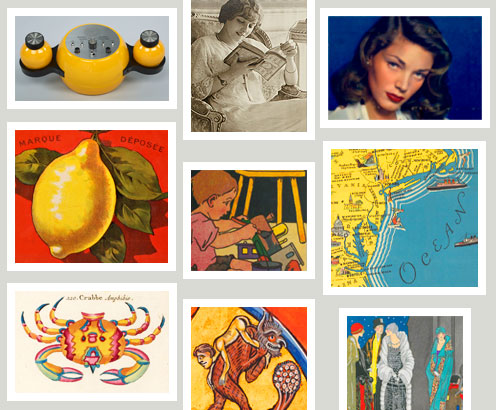Elizabeth Gaskell’s social engagement
As the Victorian novel was in full swing, Elisabeth Gaskell depicted social panoramas which testified to her knowledge of both the industrial North and the rural South of England, paving the way for the demands of feminist movements and the Suffragettes.

Elisabeth Cleghorn Gaskell was a British novelist. She was born in 1810 in London and died in 1865. Taken in by an aunt after her mother died when she was still a child, Elisabeth spent her childhood at Knutsford, in Cheshire, a town which she used as a background for her novel Cranford (1853). She studied Latin, French and Italian at the school of the Byerley Sisters in Barford, and then in Stratford-on-Avon in 1824, before she returned to live with her father in London, where he was Keeper of the Treasury Records. He remarried in 1814. Upon the death of her father in 1829, she returned to Knutsford. During a visit to Manchester she met William Gaskell, minister and teacher. They got married and settled in this dark and smoky industrial town in the North of England, which inspired the background for her novels Mary Barton (1848) and North and South (1854). Leading an active life as wife and mother, Elisabeth became really involved in writing. She published her first novel Mary Barton anonymously. It was a mixture of a love story and a detective story, rooted in the conflicts between the mill workers and their superiors. Following her instant literary success, Charles Dickens invited her to write for his weekly magazine Household Words, where she published Cranford, the chronicle of a small English town, in the form of short sketches, depicted with humour. Shortly after followed North and South, with a social dimension, and after that Wives and Daughters (1864-1866), a great novel published monthly in 18 instalments in the Cornhill Magazine, and finally Cousin Phyllis (1864), half-way between a novel and a short story. She was also known for her gothic-style ghost stories, published in Charles Dickens’s magazine, along with other great authors such as Wilkie Collins.

Samuel Laurence, Portrait d’Elizabeth Gaskell in Jenny Uglow, Elizabeth Gaskell, Faber and Faber, 1993
Her social conscience and her feminine gaze upon the world of work and the underprivileged classes lead her to depict with fairness the living conditions of the oppressed: workers and women. In North and South, her fourth novel published in the journal Household Words between 1854 and 1855, the reader follows the peregrinations of the heroine Margaret Hale, daughter of a vicar who left the south of England to settle with his wife and daughter in the industrial town of Milton. There, Margaret discovers with horror the bitterness of the industrial revolution which breaks the workers, whose courage she admires, and becomes friends with them, despising John Thornton, the cotton factory owner, despite him being a friend and student of her father’s. The confrontation between Margaret and Thornton have undertones of Jane Austen’s heroes in Pride and Prejudice, with their passionate personalities and their challenging attitudes. Nevertheless, Margaret learns to like the town of Milton, a fictional place inspired by Manchester, which was then called Cottonopolis : this great city based on the cotton industry, was polluted and noisy and completely devoted to work, and it was the first industrial city in England.
In 1853, 108 cotton factories were based in Manchester, where workers lived and worked in miserable conditions. Friedrich Engels wrote a very detailed account of the city in 1845 in his Situation of the working class in England.

Charles de Mouy, Revue européenne : lettres, sciences, arts, voyages, politique, septembre 1861, p. 148
However, Elizabeth Gaskell was not the only woman writer to take an interest in the fate of workers in the cotton factories. Amongst the friends of the Gaskell couple, whom they entertained at Plymouth Grove, her house in Manchester, could be counted the sociologist and journalist Harriet Martineau, along with writers Charles Dickens and Charlotte Brontë, who, in Shirley depicted the portrait of a young heiress who had a keen interest in the fate of the cotton factories in Yorkshire around 1850. Strikes were taking their toll on the industry and revealed social conflicts, which other authors have minutely described:
Very close to Charlotte Brontë and also spending a lot of time with her sisters Emily and Anne, Elizabeth Gaskell wrote the biography of the famous English novelist, writing very sensitively a lively portrait of a family entirely dedicated to writing. Charlotte Brontë and Elisabeth Gaskell shared a feminine vision of writing, engaging with social issues, which was new in this half of the 19th Century, strongly dominated by the father figure of Charles Dickens. In a discreet and efficient way, she carried a message which bordered on subversive and went against the grain of many common misconceptions about women writers of that time.

The cotton famine – group of mill operatives at Manchester, The Illustrated London New, 22 november 1862, p. 564
Further reading
Explore the collection of manuscripts by Elizabeth Gaskell,
Discover the websites dedicated to Elizabeth Gaskell and the Elizabeth Gaskell society,
Watch the adaptation of North and South by Brian Percival,
And read previous blog posts of the series “English women writers”






Ajouter un commentaire